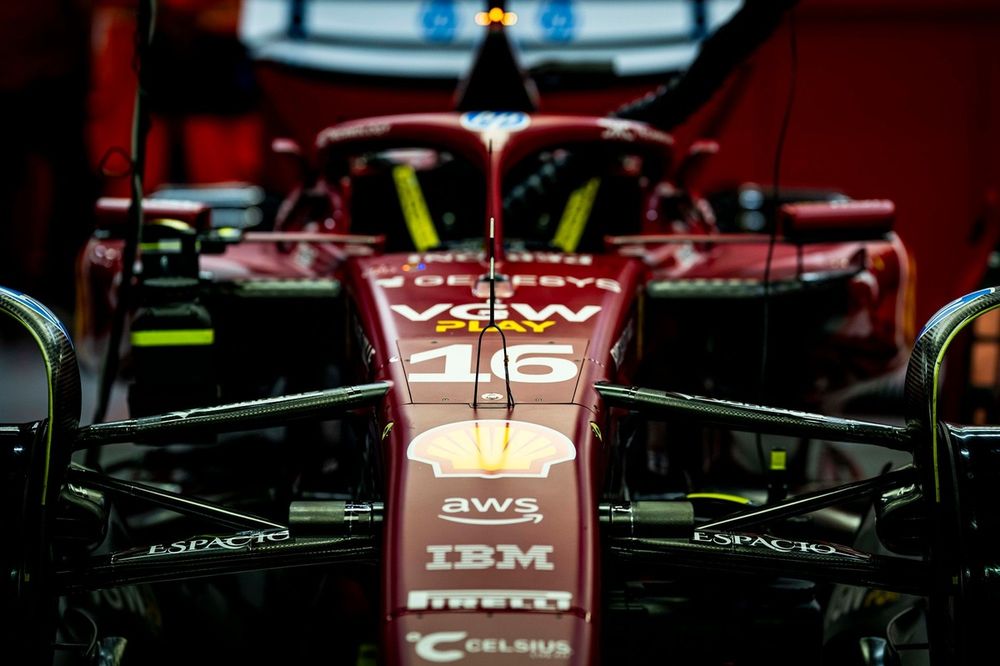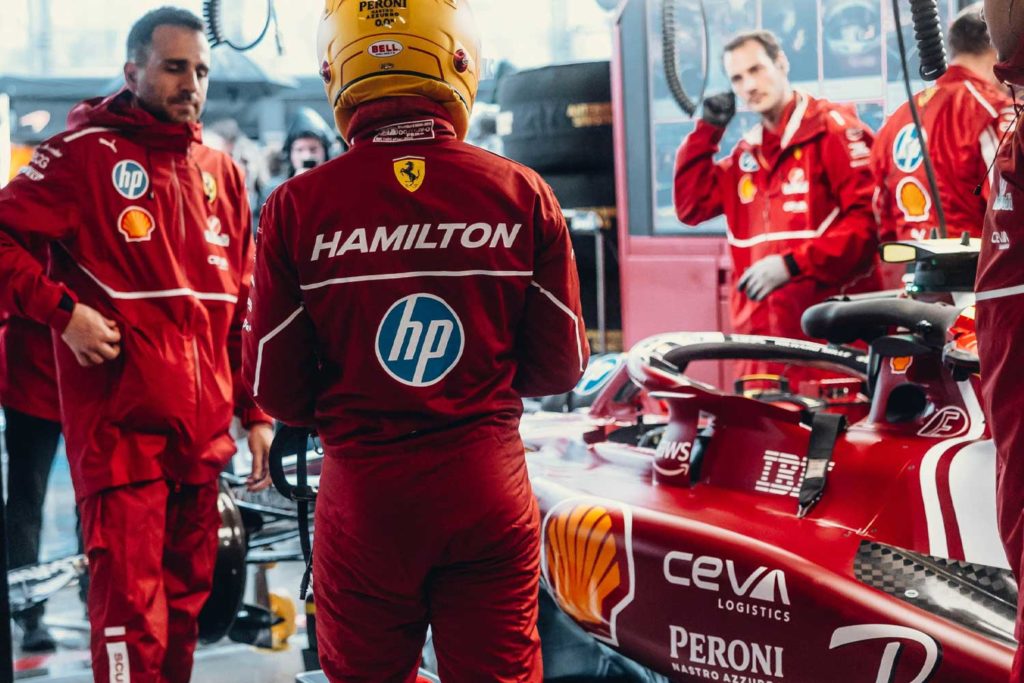The air in Maranello was thick with anticipation heading into the 2025 Formula 1 season. Coming off a stellar end to 2024, where they pushed McLaren to the brink for the constructors’ championship, Ferrari was a team brimming with confidence.
With the legendary Lewis Hamilton joining Charles Leclerc to form a super-team driver pairing, and with Red Bull showing signs of vulnerability, 2025 was supposed to be Ferrari’s year.
The Tifosi dared to dream of a return to championship glory. But as the season unfolded, that dream quickly soured into a waking nightmare.
The bold, radical gamble that was the SF25, a car that shared less than 1% of its DNA with its successful predecessor, had failed. And it failed spectacularly.

The decision to completely overhaul the car was a high-stakes bet from the outset. Team Principal Frederic Vasseur and his technical team made the audacious call to scrap the evolution of the SF24, a car that had delivered wins and a near-miss in the constructors’ battle. The motivation was rooted in a desire to unlock a higher performance ceiling. The engineers believed the old concept had reached its developmental peak, and a radical redesign was necessary to clean up the airflow around the chassis and open new avenues for aerodynamic progress. The most significant of these changes was the switch to a pull-rod front suspension, a major engineering undertaking aimed at lowering the car’s center of gravity and improving airflow management from the front wing. Alongside this, the cockpit, engine, and fuel tank were pushed further back, all in the pursuit of ultimate performance. These were not minor tweaks; this was a fundamental reimagining of the car’s philosophy. It was a move that promised immense long-term gains but came with the inherent risk of upsetting the delicate balance of the car and requiring significant time to understand and optimize. Time, in the ultra-competitive world of Formula 1, is a luxury no team can afford.
The first signs of trouble emerged early in the season. While the SF25 showed flashes of raw, tantalizing speed, it was a beast that was proving incredibly difficult to tame. The core of the problem lay in the car’s extreme sensitivity to ride height. To unlock its peak performance, the SF25 needed to be run dangerously low to the ground, practically skimming the asphalt. The issue was that the car struggled to maintain this aggressive setup, especially at high speeds and on bumpier circuits. The aerodynamic platform was unstable, making the car inconsistent and unpredictable. The drivers were battling a car with a knife-edge operating window, and this instability led to a cascade of problems.
The most glaring of these was excessive plank wear. The plank, a wooden board that runs along the underside of the car, is a critical component in F1’s regulations, and there are strict limits on how much it can wear down during a race. In China, the SF25’s fatal flaw was brutally exposed when both Hamilton and Leclerc were disqualified for breaching these limits. This was not just a minor setup error; it was a public declaration of a fundamental misunderstanding of their own creation. The incident sent shockwaves through the paddock and confirmed the deep-rooted issues within the SF25’s design. From that point on, Ferrari’s season became an exercise in damage control.

The team was trapped in a vicious cycle. They knew that raising the ride height would make the car more compliant but would also slash its performance, particularly in the crucial qualifying sessions where every thousandth of a second counts. In a grid as tightly packed as 2025, a small loss of performance could mean the difference between a front-row start and a Q2 exit. As a result, they were often forced to run the car dangerously low, constantly flirting with disqualification and reliability issues. To mitigate the risk during races, the team resorted to a series of compromises that were painful to watch. Drivers were instructed to lift and coast, to avoid bumps, and to manage the car with altered engine maps and higher tire pressures, all of which blunted their pace. For a team of Ferrari’s stature, with drivers of Hamilton and Leclerc’s caliber, this was an untenable situation.
The development path for the SF25 further highlighted the extent of their struggles. While their rivals, particularly the dominant McLaren team, were rolling out relentless aerodynamic upgrades that delivered instant performance gains, Ferrari was stuck fixing the fundamentals. Their updates, like the revised rear suspension introduced at Spa, were aimed at addressing the persistent ride height issues, but they barely moved the needle. The drivers acknowledged the small improvements but admitted that the car remained a puzzle they were yet to solve.
The Hungarian Grand Prix was the moment the team’s desperation boiled over. Believing they had finally gotten on top of their platform issues, they ran the car in its most aggressive, low-to-the-ground setup. The gamble paid off in qualifying, with Leclerc securing a stunning pole position, suggesting a potential breakthrough. But the race told a different, more brutal story. The excessive plank wear returned with a vengeance, forcing the team into mid-race adjustments to tire pressures that, in Leclerc’s own words, made the car “undriveable.” It was a perfect encapsulation of their season: a fleeting glimpse of potential, followed by a harsh and unforgiving reality.

In the final analysis, Ferrari’s position in the constructors’ standings will likely flatter them. They may well finish second to McLaren, but this will be a misleading reflection of their true performance. The team’s saving grace has been the exceptional talent of Hamilton and Leclerc, who have consistently extracted the maximum from a deeply flawed car. The underperformance of the second drivers at Red Bull and Mercedes has also propped up Ferrari’s points tally. In a scenario where their rivals had two drivers performing at the highest level, Ferrari would likely be languishing in fourth place, a position that more accurately reflects their car’s pace.
For a team that entered the season with championship aspirations, anything less than a genuine title fight is a failure. The bold swing they took with the SF25 was a miss. However, even in the depths of this disappointing season, there is a silver lining. The team’s focus on fixing the car’s mechanical and suspension issues, while painful in the short term, may prove to be an invaluable investment for the future. With the new regulations coming in 2026, many of these mechanical components will carry over. This disastrous 2025 season has effectively become a live test program, providing them with a wealth of crucial data and a deep understanding of their suspension concept.
The lessons learned from the failure of the SF25 will be etched into the minds of the engineers at Maranello. The experience, the learning, and the clarity gained from this painful chapter could be the very foundation upon which their future success is built. If Ferrari can apply these hard-won lessons to build a car that is competitive right out of the box in 2026, then perhaps this season of struggle will not have been in vain. For the Tifosi, the wait continues, but with the hope that the ashes of 2025 will give rise to a championship-winning phoenix.